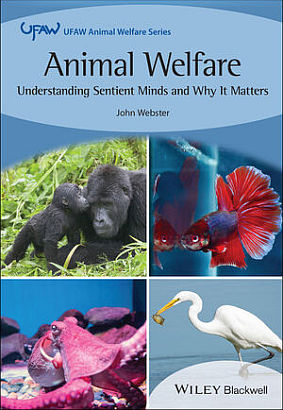
HOME >> 海外出版社刊 洋書販売 新着書籍 >>
Animal Welfare: Understanding Sentient Minds and Why It Matters

Wiley-Blackwell
| Author | : | John Webster |
価格:21,230円 (本体 19,300円+税) 送料サービス
・Release: 2022
・ISBN: 9781119857068
・176 Pages
・Trim Size: 170 X 9.8 X 244 ・Paperback
Description
Animal Welfare
An Accessible Overview of the Concept of Sentience Throughout the Animal Kingdom and Why It Matters to Humans
Animal Welfare explores the concept of sentience and the development of sentient minds throughout the animal kingdom. The work provides improved definitions and analysis of the ideas of sentience, cognition, and consciousness, along with evidence of advanced mental formulation in birds, fish, and invertebrates. Considerations between humans and animals are also discussed, such as outcome-based ethics in relation to humans' duties of care and the rights and wrongs of domestication. The work is divided into three parts and covers key topics such as:
- Specifics of animal sentience, from pain and suffering, to fear and dread, all the way to animals' social life and the comfort/joy/hope/despair they experience
- What we know about the sentience of different classes of animals in the waters, air, savannah/plains, and forests
- Considerations on human interactions based on animal sentience, including death (killing), animal farms, animals in laboratories, wild animals in captivity, and animals in sports and entertainment
- Analysis on what humans can learn from animals based on what we know about their varying levels of sentience
Animal Welfare serves as an invaluable analysis of animal sentience for students, teachers, and professionals directly involved in the study, teaching, and applications of animal behavior, motivation, and welfare. Thanks to the wide-ranging implications of animal sentience, the work will also appeal to everyone with a broader interest in animal behavior and human/animal interactions.
Table of contents
About the author
Preface
Acknowledgements
Part 1. The sentient mind, skills and strategies
Chapter 1: Setting the scene
human attitudes to animals
animal behaviour science
rules of engagement
Chapter 2: Sentience and the sentient mind
Sentience and consciousness
the five skandhas of sentience
understanding the sentient mind
pain and suffering
fear and dread
coping with challenge: stress and boredom
social life
comfort and joy
hope and despair
sex and love
sentience in summary
Chapter 3: Special senses and their interpretation
vision- hearing
smell and taste
cutaneous sensation and touch
magnetoreception
interpreting the special senses
theory of mind
summary
Chapter 4: Survival strategies
foraging: honeybees, sheep, tool use, storing the harvest
hunting behaviour, the predator and the prey
spatial awareness and navigation
breeding behaviour and parental care
Chapter 5: Social strategies
sentient social life
social hierarchies, the pecking order
communication
cooperation and empathy
social learning, education and culture
territorial behaviour and tribalism
Part 2. Shaping sentient minds: adaptation to the environment
Chapter 6: Animals of the waters
pain and fear
survival skills, hunting, hiding and problem solving
migration
communication and social behaviour
Chapter 7: Animals of the air
feeding strategies
migration
sentience and breeding behaviour
social behaviour, culture and education
bats
Chapter 8: Animals of the savannah and plains
environmental challenges
animals of the open plains
sheep
goats
cattle
wild Bovidae
feral horses
elephants
predators
Chapter 9: Animals of the forests
the boreal forest
cervidae
beavers
bears
the tropical rain forest
snakes
primates
Chapter 10: Close neighbours
history of domestication
artificial selection
domestication, sentience and wellbeing
pigs
dogs
cats
dairy cows
horses and donkeys
chickens
opportunist neighbours: rats and urban foxes
coda
Part 3 Why it matters: nature's social union
Chapter 11: Our duty of care
sentience revisited
outcome-based ethics
death and killing
farms, farmed animals and food
animals in laboratories
wild animals in captivity
animals in sport and entertainment
pets
what can we learn from the animals?
Further reading
General reading
Index



